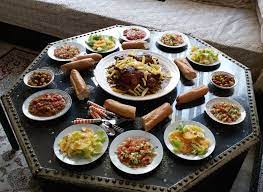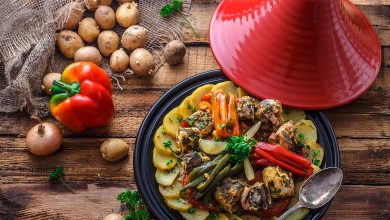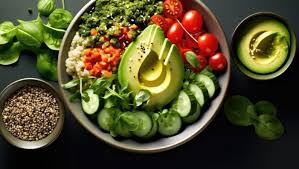What is the history of Morocco cuisine? What food is Morocco best known for?
the history of Morocco cuisine
The history of Morocco cuisine:
Moroccan cuisine has a rich and diverse history, influenced by a blend of Berber, Arab, Andalusian, and Mediterranean culinary traditions. Moroccan food is distinguished by its distinctive tastes, spices, and cooking methods. An overview of the development and history of Moroccan cuisine is given below:
Berber influence: The Berbers, an indigenous people of North Africa, played a founding role in Moroccan cuisine. Their diet is based on grains, legumes, fruits and dairy products. Staple foods such as barley, wheat, olives and dates are commonly used in their meals.
Arab and Islamic Influence: With the arrival of the Arabs and the spread of Islam, Moroccan cuisine underwent significant changes. Spices such as cinnamon, cumin, coriander, saffron and cloves are introduced, giving a distinctive flavor to Moroccan dishes. The use of fruits such as lemons and oranges has also become popular.
Andalusian influence: During the Golden Age of Islam, Andalusian Muslims fleeing Spain due to the Reconquista settled in Morocco, bringing with them their culinary traditions. This influence is reflected in the use of ingredients such as almonds, various fruits and in the preparation of pastries.
Medieval Influence: During the Middle Ages, Moroccan cuisine saw the incorporation of ingredients and cooking techniques from the Middle East and Mediterranean. Dishes such as couscous, tagine and various meat stews have become popular and are now iconic Moroccan dishes.
Ottoman influence: Morocco was also influenced by the Ottoman Empire, especially in the northern regions. This influence is found in the use of lamb in Moroccan cuisine and in the preparation of skewers and other grilled meats.
European Influence: During the colonial period, especially with the presence of French and Spanish colonies, Moroccan cuisine incorporated some European ingredients and cooking styles. For example, French pastries and baguettes have become an integral part of Moroccan urban culture.
Modernization and globalization: In recent years, Moroccan cuisine has evolved to meet modern tastes and preferences. Although traditional dishes remain the mainstay, there is an increasing incorporation of international flavors and ingredients in Moroccan culinary practice.
Some popular Moroccan dishes that highlight the diverse influences and flavors of Moroccan cuisine include couscous, tagine (a slow-cooked stew), pastilla (a sweet and savory cake), harira (a a hearty soup), and a variety of grilled and skewered meats.
Overall, Moroccan cuisine has evolved over the centuries, blending diverse cultural and historical influences to create a dynamic and unique culinary heritage that continues to captivate taste buds across the world. around the world.


What food is Morocco best known for?
Morocco is famous for its diverse and flavorful cuisine, offering many delicious dishes that reflect the country’s rich culinary heritage. Here are some of the best known Moroccan dishes:
Couscous: Couscous is a staple dish in Morocco and is often considered the country’s national dish. It is made from semolina grains and is often served with a variety of vegetables, meat (such as lamb, chicken or beef) and flavorful sauces.
Tagine: Tagine refers to both the cooking pot (conical clay pot) and the simmered stew prepared in it. Tagine dishes often include a combination of meats, vegetables, spices and sometimes fruit, giving them a rich, aromatic flavor.
Pastilla (B’stilla): Pastilla is a sweet and savory tart consisting of thin layers of puff pastry, filled with a mixture of grated poultry (usually pigeon or chicken), almonds, spices and sometimes eggs. It is often sprinkled with powdered sugar and cinnamon.
Harira: It usually includes lentils, chickpeas, tomatoes, onions, rice and a variety of spices, creating a hearty and nutritious dish.
Mechoui: Mechoui is a dish consisting of slow-roasted, tender and succulent whole lamb or lamb, often prepared for special occasions and celebrations.
Mint tea (Moroccan mint tea): It is a sweet and refreshing tea made from green tea leaves, fresh mint leaves and a generous amount of sugar. The preparation and serving of mint tea is rich in cultural significance.
Moroccan Salad: Moroccan salad is an important part of the cuisine and is often served as an appetizer. They include a variety of vegetable-based salads, often incorporating ingredients such as tomatoes, cucumbers, olives and spices.
Sweets made from dates and figs: Morocco is famous for its sweet dishes made from dates, figs and almonds. These traditional dishes are often enjoyed on special occasions and celebrations.
Bread (Khobz): Bread, called “khobz,” is a fundamental part of the Moroccan meal. It is typically a round, crusty, dense bread that accompanies almost every meal.


Moroccan cuisine is characterized by rich flavors, aromatic spices and a skillful blend of sweet and savory elements, making it a unique and popular culinary experience.




